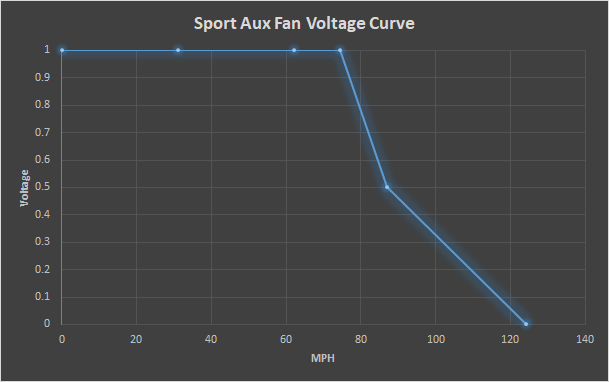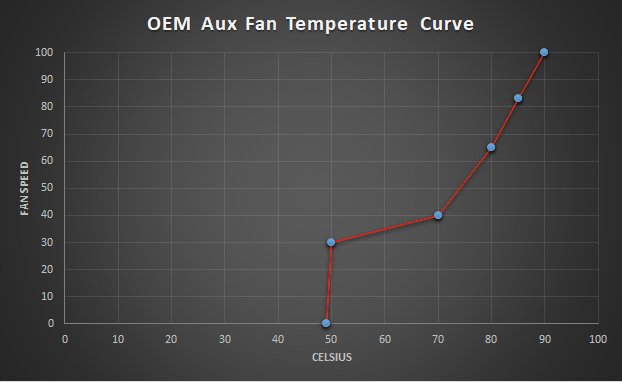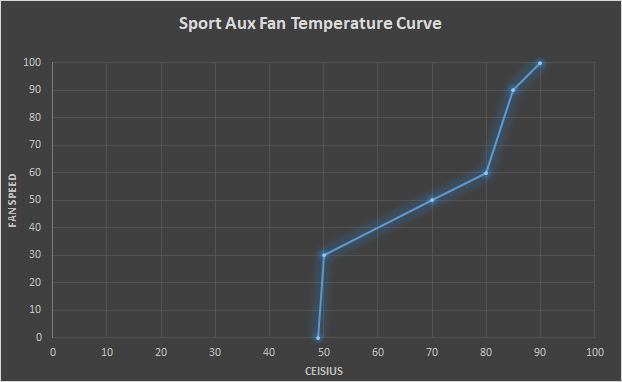Your tune dollars are hard at work. We promised to come up with new and exciting features for the E46 M3 platform. Seems like there isn’t much to do with this platform anymore, but we tinker a lot. We are pleased to announce three new exclusive BETA features to the B-Spec Tune:
- Sport DSC Tune for MK20
- Ignition Cut Off
- Sport Auxiliary Fan Curve
We have tested these features extensively to ensure that these additional add-ons to the B-Spec Tune will not affect reliability of the tune itself. However, please note that your experiences may vary from car to car which is why we are releasing these as BETA features and may not be able to provide technical support on these features. These add-ons may not be applicable to all cars and are available to customers at your own risk. If for any reason the features don’t work, you can always flash your previous tune while we are continuing to develop. For information on how to get these updates, see very bottom of article.
Sport DSC Tune for MK20 (BETA)
Buildjournal’s Sport DSC Tune will adjust your MK20 DSC parameters and ignition cut off so it is less invasive during spirited driving similar to M-Track Mode on the newer E46 M3s. Cars produced between 2003.5-2006 have the MK60 DSC unit which allows for M-Track mode, while older E46 M3 with MY of 2001-2003 are stuck with the older MK20 DSC unit. This MK20 unit doesn’t allow for M-Track mode to be enabled. While it is not an exact copy of M-Track mode, we have figured out a way to mimic some of the functions of it on the MK20 units that we will call Sport DSC Tune. This tune will significantly reduce DSC interference, but still keep it on in case of absolute emergencies. Keep in mind that driver experience will vary depending on different tire setups which is why we are releasing this as BETA.
Can I get Sport DSC Tune?
Because MK60 M3s already have M-Track mode, the Sport DSC Tune add-on is ONLY available for MK20 units on cars on MY 2001-2003 M3s. If you are unsure which DSC system you have, please see below.
If you see a DSC system in your top left “compartment” area, you have MK20. If it is empty, your DSC unit is near your intake manifold and you have the MK60 unit. The Sport DSC Tune will NOT work on MK60 unit and can cause quirky interventions if flashed on the MK60 unit. However, M-Track Mode for MK60 units is not made available from factory or by our B-Spec Tune. Enabling it requires some program adjustments – please email us if you would like to inquire about M-Track mode for your car. If you purchase the B-Spec Tune for your Mk20 E46 M3, you can the Sport DSC tune as an add-on feature on the order form. We will require a picture of the top left “compartment” under your hood to confirm you have the correct DSC unit.
Why would I want Sport DSC tune?
The MK20 DSC unit is a relatively primitive unit that interferes much more than the newer MK60 DSC units. You may notice when you have a more aggressive wheel setup or tires, the DSC unit turns on more frequently than usual during aggressive driving or cornering. Even in everyday normal driving, MK20 units activate when it really shouldn’t. We have tested both the MK20 and MK60 on highway off ramps and noticed the MK20 unit activates about 40% more than the MK60 with the same wheel setup and cornering speed. With the Sport DSC tune, drivers to have the ability to drive aggressively while still keeping the DSC on for safety.
How does Sport DSC tune work?
Once Sport DSC is flashed onto your DSC unit, the new parameters will always be active while the DSC button is ON. We have designed this DSC tune to still use the ABS system and keep you safe in case of a complete loss of control. We increase the minimum amount of slip to activate DSC, and decrease torque intervention so that the DME doesn’t suppresses as much power when the DSC does kick in. We also disable fuel cut off in favor of ignition cut as well.
How does Sport DSC tune affect normal driving?
Sport DSC does affect when and where the DSC unit reacts as it is prudent to relearn the limits of your driving in order to better predict and understand your DSC activation spots. However, it is not possible to have an on/off switch for Sport DSC. You will need to keep in mind that
- DSC Button ON = Sport DSC, less intrusive DSC mode but still on for emergencies
- DSC Button OFF = DSC is completely off. Drive with caution.
- Opting in for Sport DSC means you will lose the factory DSC tune that is safer
With this in mind, we adjusted the parameters to be a tad more conservative. However, this does not mean that your car can defy the laws of physics. Please drive responsibly and only push the limits on the racetrack. We are not liable nor responsible for any mishaps with the abuse of this mode. Under normal driving daily driving, you should not see any difference in DSC intervention.
How does Sport DSC tune affect aggressive driving?
Under spirited drives, you will see a reduction in DSC intervention that may help with rotating the car through corners. However, if the slip angle is too much…DSC unit will still intervene mimicking the feature of M-Track Mode. Additionally, power will be consistently maintained even when DSC does kick in, as opposed to the factory DSC settings, where you will feel power bogging down or limited when DSC interferes.
Is there wear and tear associated with Sport DSC tune?
Yes, there will be increased tire wear from slip if you drive aggressively. Additionally, we deliberately kept the ABS parameters stock meaning your ABS system will still pulsate and actuate your braking system during DSC intervention. If you decide to add more power to maintain cornering speed during DSC intervention, it may wear out your brake pads as the ABS unit will try to counter the increased power. With the Sport DSC tune, the driver is given the option to power through and use up the brake pads in exchange for more cornering speed instead of having the DSC limit that. However, this is a choice that the driver will have to make as you can choose to let the car slow down enough to deactivate DSC intervention altogether.
Ignition Cut Off (BETA)
On the stock ECU, there are 2 stages of cutting power at the rev limiter: 1. fuel cut 2. ignition cut.
Fuel cut means that fuel will literally stop being injected when the fuel cut rev limiter is reached. This is useful for flat foot shifting – when you stay on the gas pedal while clutch is out when shifting to save time. What occurs is that the fuel cut rev limiter delays the power because of the fuel cut.
Ignition cut off means that only the spark is removed to cut power and fuel will still be injected. This is more common among drag racing. Due to the unburnt fuel and air, the car runs richer at redline and can produce pops/flames on upshifts at redline.
For the E46 M3, there are two types of rev limiters hard and soft. The purpose of the rev limiter is to cut fuel to ensure RPM doesn’t exceed limits. The soft limiter doesn’t result in bouncing off the rev limiter and softly bogs the car down about 500 RPM like power is off. The hard limiter which is ignition based, you will feel a harsher cutoff but no bog.
To combat some misconceptions of the engine running lean on fuel cut, the effect of shutting fuel off does not lean out an engine. Engines will cease to fire the cylinder and the next spark cycle after fuel injection signal is stopped. The cool air passes through into the exhaust, and the O2 sensors will read it as pure air not LEAN. Temperatures concerning combustion do not rise and mixture does not detonate. No cylinders go lean or starve with the stock, 2-stage setup (fuel + spark).
What cut off do I choose?
If this car is your daily driver, we recommend you stick to the stock 2-stage fuel cutoff and use the raised RPM limiter to avoid fuel starvation at redline. It is by far the safest option for you and your engine. The ideal setup system for electronically fuel injected cars would cut fuel and spark, which the stock setup already does quite well. It is well balanced for reliability and performance.
For drag cars with launch control or race cars that need those few seconds shaved off, the less severe ignition cutoff at redline would work best, at the expense of additional wear on engine. Ignition based cutoff will run rich at redline in order to avoid bogging, but it does come at a cost.
From our experience, this feature pairs will with our Sport DSC tune, specifically because the power is retained even after DSC intervention.
Is there wear and tear associated with this ignition based cutoff feature?
Yes, the obvious downside to this is that it can damage exhaust side valves, O2 sensors, catalytic converters and exhaust system due to the potential heat. You will also see fuel being dumped at redline.
During ignition cut air and fuel will still be entering the combustion chamber. In absence of a spark, the car runs rich at redline. This could ignite, burble and shoot flames during upshifts.
As a rule of thumb, OEM manufacturers have overwhelmingly chosen 2 stage fuel/ignition cut over just ignition cut for the sake of car components. We are not be responsible for any issues you may experience from selecting the ignition cut off option. If you do not consider yourself an expert or at least well-knowledgeable about ignition cutoffs, we would recommend choosing the default stock option. Notice the fuel dump at the rev limiter of this dyno due to ignition based cutoff.
[tg_youtube width=”1920″ height=”1080″ video_id=”V_rNxSZDcHk”]
Sport Auxiliary Fan Curve (BETA)
Sport Auxiliary Fan Curve is a feature that remaps your auxiliary fan (not your clutch fan). We re-scaled the curves that determines the auxiliary fan function for better cooling during idling in summertime traffic and while the car is resting between track sessions. While we do not have numerical data for this, it should cool down the car better during these two scenarios hence this being considered BETA. The aux fan is controlled by both voltage power and fan speed controller. We can see the comparison between stock curve and Buildjournal’s revised curves for both voltage and speed.
Fan Voltage Curve
On the OEM graph, the auxiliary fan becomes less effective at high speeds and we see that the stock curve does taper off to half power around 78 mph. We revise this to let it run full power a bit longer for additional cooling.
Fan Speed Curve
The auxiliary fan spins faster as the temperatures goes higher on the stock curve. We simply increase the speeds of auxiliary fan once temperatures are past optimal operating temperatures, leaving alone the lower temperature values as there is no need for additional cooling, and the aux fan is pretty loud.
How Do I Update with New Features?
For all new customers, please order the B-Spec Tune on our page. For all existing customers who would like to update their tune with Sport DSC tune, please email us at info@thebuildjournal.com with your Order # and a photo verification of what DSC unit you have. All requests must be made by email. We will not monitor tune requests outside of email. For all existing customers who would like to update their tune with ignition based cutoff, please email us at info@thebuildjournal.com with your Order # and why you would like to add this feature. For upcoming features and change logs make sure to visit our Future Research and Developments page.






